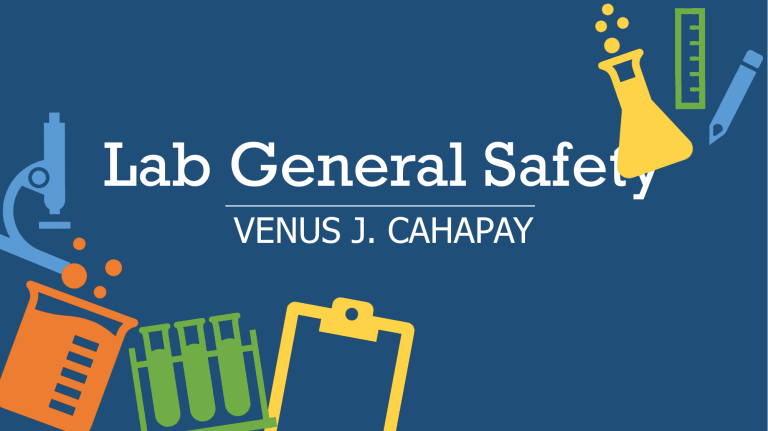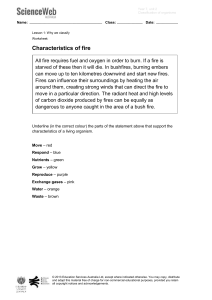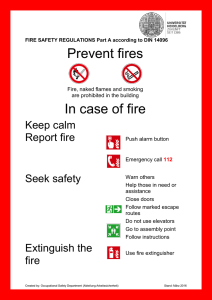
Lab General Safety VENUS J. CAHAPAY Objectives: At the end of the session, students will be able to • Understand the SAFETY Working Condition • Identify the different Types of Fire • Follow the procedure in Using Fire Extinguisher next Identify what general safety is being performed Identify what general safety is being performed or must be perform Identify what general safety is being performed Identify what general safety is being performed Identify what general safety is being performed Identify what general safety is being performed Identify what general safety is being performed GENERAL SAFETY • Safe working conditions help prevent injury to people and damage to computer equipment. • A safe work space is clean, organized, and properly lighted. Everyone must understand and follow safety procedures. These are some of the basic precautions to observe when working on a computer • Remove your watch and jewelry and secure loose clothing. • Turn off the power and unplug equipment before performing service. • Never open a power supply or a CRT monitor. • Do not touch areas in printers that are hot or that use high voltage. These are some of the basic precautions to observe when working on a computer • Know where the fire extinguisher is located and how to use it. • Keep food and drinks out of your work space. • Keep your work space clean and free of clutter. • Bend your knees when lifting heavy objects to avoid injuring your back. FIRE SAFETY Fire Safety Never fight a fire that is out of control or not contained. Get out of the building quickly. Always have a planned fire escape route before beginning any work. Contact emergency services for help. Locate and read the instructions on the fire extinguishers in your workplace before you use them. Identify the Classes of Fire CLASSES OF FIRE CLASS A CLASS B Class A fires are fires in ordinary combustibles such as wood, paper, cloth, trash, and plastics. Class B fires are fires in flammable liquids such as gasoline, petroleum oil and paint CLASSES OF FIRE CLASS C CLASS D Class C fires are fires involving energized electrical equipment such as motors, transformers, and appliances. Class D fires are fires in combustible metals such as potassium, sodium, aluminum, and magnesium CLASSES OF FIRE CLASS K Class K fires are fires in cooking oils and greases such as animals fats and vegetable fats. How to use the fire extinguisher It is important to know how to use a fire extinguisher. Use the memory aid P-A-S-S to remember the basic rules of fire extinguisher operation: P: Pull the pin. A: Aim at the base of the fire, not at the flame S: Squeeze the lever. S: Sweep the nozzle from side to side. GENERALIZATION EVALUATION 1-3 Give at least 3 Basic precautions to observe when working on a computer 4-7 WHAT THE ACRONYM PASS STAND FOR 8-10 GIVE ATLEAST 3 CLASSES OF FIRE Remember… Safety First! (Enter your own creative tag line above)


